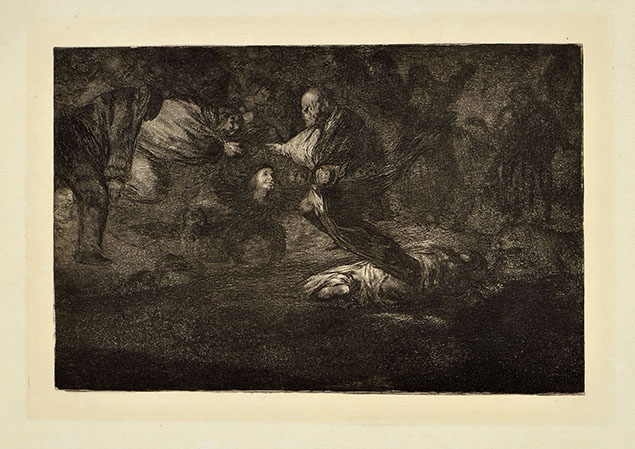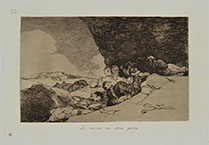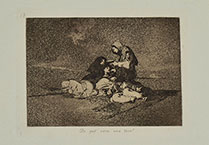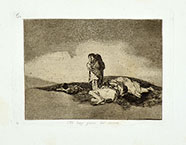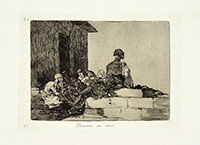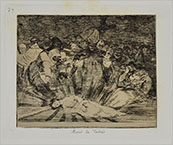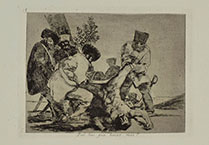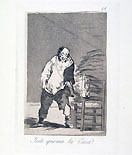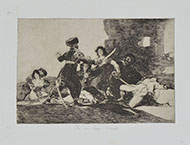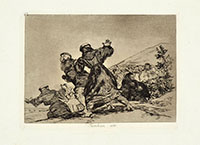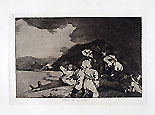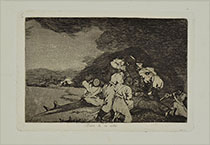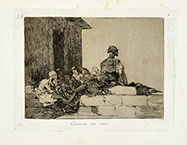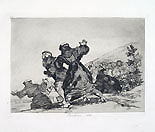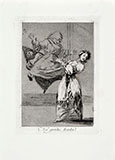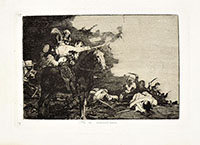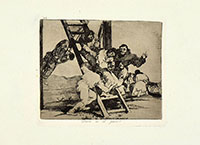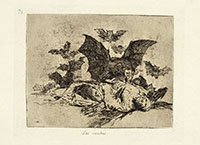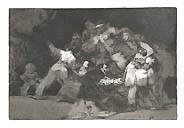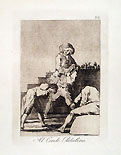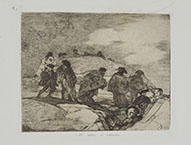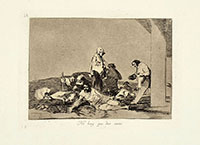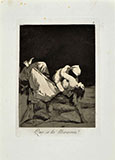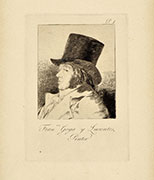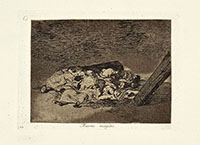(Fuendetodos, near Saragossa 1746 - Bordeaux 1828)
DIOS LOS CRIA Y ELLOS SE JUNTAN (GOD CREATES THEM AND THEY JOIN UP TOGETHER), c.1816-1824
Etching and burnished aquatint, plate 18 from Los Proverbios (c.1816-1824); Harris 265, III, 1. A fine impression from the first edition (1864), limited to 300 copies, printed in black ink on heavy wove paper. With margins, binding traces on the left margin and a minor tear restored on the right margin; otherwise in very good condition. To the platemark 245 x 350 mm, the entire sheet measuring 325 x 490 mm.
Of Goya's four main print series, the series of etchings known as Los Proverbios or Los Disparates, is the last and the most enigmatic of his oeuvre; these strikingly powerful etchings are full of the terror of nightmare visions. The series was published under the title Los Proverbios, although Goya's own captions for the working proofs include the word disparates, meaning follies. As a result, this print series is known by both titles. The fate of the plates after completion is only partly understood. It is known that the series originally comprised 22 plates, and these were left with Goya's son Javier upon the artist's departure from Spain, remaining hidden until Javier's death in 1854. Eighteen of them passed through two owners before coming to the Real Academia de Nobles Artes in 1862, where they were cleaned and published in a first, posthumous edition in 1864. It was at this point the proverbs were assigned. Meanwhile, the four remaining plates had made their way to Paris, where they were discovered in the early 1870s. These four were eventually published in the French periodical L'Art in 1877.
Goya is considered the most important Spanish artist of the late 18th and early 19th centuries and throughout his long career was a commentator and chronicler of his era. Immensely successful in his lifetime, Goya is often referred to as both the last of the Old Masters and the first of the moderns. His great body of works includes some 700 paintings, 900 drawings and almost 300 prints. He was a painter, an extraordinary portraitist, and a revolutionary printmaker.
In his teens he studied in Saragossa; in 1764 and 1766 Goya entered the competitions of the Real Academia de Bellas Artes de San Fernando in Madrid but failed; undaunted went to Rome to study past art; returned to Saragossa in 1771 and began to enjoy some success. In 1780 he was elected to the Real Academia de Bellas Artes and eventually became its Professor of Painting. In 1799, Goya became Primer Pintor de Cámara (Prime Court Painter) to Charles IV and María Luisa, the highest rank for a Spanish court painter. In the same year he published the first series of his etchings, Los Caprichos. In 1807, Napoleon led the French army into the Peninsular War against Spain. Goya remained in Madrid during the war, which seems to have affected him deeply. Although he did not speak his thoughts in public, they can be inferred from his Disasters of War series of etchings. Other works from his mid-period include Los Disparates etching series, and a wide variety of paintings concerned with insanity, mental asylums, witches, fantastical creatures and religious and political corruption.
His late period culminates with the Black Paintings of 1819–1823, applied on oil on the plaster walls of his house the Quinta del Sordo (House of the Deaf Man) where, disillusioned by political and social developments in Spain he lived in near isolation. Goya eventually abandoned Spain in 1824 to retire to the French city of Bordeaux, where he died.
